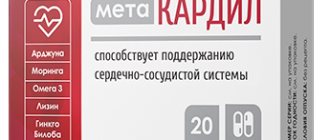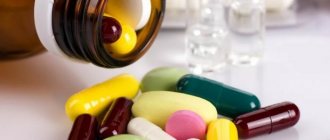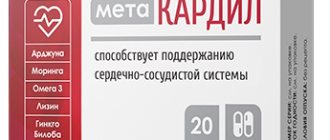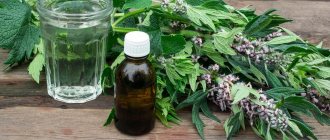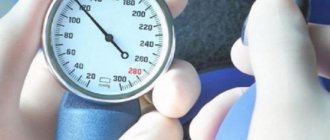Adrenaline and norepinephrine - what's the difference?
The content of the article
The connection between adrenaline and norepinephrine does not end with a similar name. Both chemicals belong to the group of catechol amines, synthesized from the amino acid tyrosine into dopamine, which is converted into norepinephrine. Adrenaline is an analogue of norepinephrine, formed as a result of its further transformation, thanks to the catalyzing enzyme - N-methyltransferase.
Each of these chemical compounds has its own functions in the body, and although they usually stimulate the same receptors, they are characterized by different receptor affinities and therefore show similar but different physiological functionality in the sympathetic nervous system.
- Norepinephrine
. Responsible for reactions of arousal state, mood changes and participates in the central regulation of pressure. It stimulates alpha adrenergic receptors. - Adrenaline
. Has a systemic effect. Stimulates all types of alpha-adrenergic and beta-adrenergic receptors.
Structures that produce, store, and release catechol amines into the bloodstream include the adrenal nucleus and neurons of the sympathetic system. The adrenal nucleus is responsible for 80% of the production of adrenaline, and the sympathetic system is responsible for the production of norepinephrine.
Both epinephrine and norepinephrine are responsible for inhibiting (suppressing) insulin secretion and stimulating glucagon release, causing a decrease in blood glucose levels.
How to trigger an adrenaline rush?
The production of adrenaline is associated with a person’s emotional state. Its release can be provoked artificially. For this it is enough:
- watch a scary movie;
- jump with a parachute;
- play dangerous games;
- see something scary, etc.
For some people, it is enough to “wind up” themselves in order for the hormone to begin its independent production. It is impossible to regulate it with products. These are exclusively emotions and the work of the nervous system.
A mind full of anxiety and various obsessive thoughts can trigger the production of the hormone. This is especially true at night, when there is silence in the apartment and various thoughts creep into your head. The receptive brain is able to draw various pictures, which is accompanied not only by fear, but also by an active loss of energy.
To control the stress hormone, it is enough to organize your thoughts. Minimize TV viewing, remove sources of bright light before bed, remove mobile phones and music.
Adrenaline - what is this hormone?
Adrenaline is the name of a hormone produced by the adrenal nucleus, which loosely translated from Latin and Greek means “above the kidney.” It was first isolated in 1895 by the Pole N. Cybulski. The hormone is a biogenic amine and is also found in plants. Colloquially it is called the stress, fight or flight hormone because its action triggers the body's defenses characteristic of life-threatening conditions.
The secretion of large amounts of adrenaline is activated by strong stressful stimuli and causes the body to quickly make extraordinary efforts. Epinephrine, released into the blood, works quickly and is quickly deactivated and degraded by monoamine oxidase and catechol-O-methyltransferase.
An increase in the concentration of adrenaline in the blood causes:
- a sharp increase in blood pressure, causing the brain, heart and muscles to receive higher doses of oxygen;
- increased ACTH secretion, i.e. adrenocorticotropic hormone, which triggers a number of alarm reactions in the body;
- tachycardia, manifested by an accelerated heartbeat;
- expansion of the smooth muscles of the bronchi, due to which the patient breathes easier, and the pupils;
- reduction of itching, angioedema and urticaria symptoms, which are the consequences of contact of an allergic person with a sensitizing substance;
- spasms of blood vessels of the circulatory system: veins, arteries and capillaries;
- decreased secretion of mucus and digestive juices in the digestive system and inhibition of intestinal motility and hunger;
- elevated blood sugar levels (hyperglycemia).
Neurotransmitter exchange
Neurotransmitter exchange
Neurotransmitters
are biologically active chemical substances through which electrical impulses are transmitted from a nerve cell
Catecholamines influence the most important processes in the human body: mood level, activity and performance, speed of thinking, ability to remember information and reproduce it, level of aggression and sexual behavior. They adapt the body to stress: the sympathoadrenal system is activated already in preparation for physical activity and helps to more easily endure changes in the internal environment.
The level of catecholamines is highest in children, so they have no problems with activity, memory, quickly switching from one activity to another, and their mood is most often good. With age, the synthesis of these substances slows down, and the older a person gets, the worse his mood, lower performance and higher susceptibility to depression.
Disturbances in the synthesis of catecholamines and their perception by the body lead to serious health problems: arterial hypertension, severe depressive states, and in old age – Parkinson’s disease. Disturbances in the functioning of the sympathoadrenal system explain the development of schizophrenia and cravings for intoxicating substances - alcohol, tobacco, and drugs.
Catecholamines interact with special receptors on the cell surface, which are called adrenergic receptors and are divided into two types: α- and β-adrenergic receptors. Stimulation of α-adrenergic receptors causes constriction of blood vessels, spleen, dilation of pupils, etc. Excitation of β-adrenergic receptors causes vasodilation, relaxation of the bronchi, increased heart rate, etc.
Adrenalin:
A hormone synthesized by chromaffin cells of the adrenal medulla. The effect of adrenaline is associated with the effect on α- and β-adrenergic receptors and largely coincides with the effects of excitation of sympathetic nerve fibers.
The action of adrenaline increases heart rate, increases blood pressure, reduces blood flow to internal organs, increases blood flow to skeletal muscles, increases blood glucose levels, causes the liver and muscle cells to break down glycogen and produce glucose, etc.
Adrenaline has a stimulating effect on the central nervous system, although it poorly penetrates the blood-brain barrier. It increases the level of wakefulness, mental energy and activity, causes mental mobilization, an orientation reaction and a feeling of anxiety, restlessness or tension, generated during strong excitement or heavy physical exertion. It is called the “fear hormone”.
Adrenaline also has a pronounced anti-allergic and anti-inflammatory effect, inhibits the release of histamine, serotonin, kinins and other mediators of allergy and inflammation from mast cells, and reduces the sensitivity of tissues to these substances.
Adrenaline causes an increase in the number of leukocytes in the blood.
Adrenaline also causes an increase in the number and functional activity of platelets, which, along with spasm of small capillaries, causes the hemostatic (hemostatic) effect of adrenaline.
Norepinephrine:
It is a catecholamine, which is produced predominantly by postganglionic cells of the sympathetic nervous system and, to a lesser extent, by cells of the adrenal medulla, a mediator of the autonomic nervous system, acting directly in the area of the presynaptic ending. It is one of the most important neurotransmitters in the brain. It is a precursor to adrenaline. Also known as the “rage hormone.”
Norepinephrine is a neurotransmitter of both the locus coeruleus of the brain stem and the endings of the sympathetic nervous system. The number of noradrenergic neurons in the central nervous system is small (several thousand), but they have a very wide field of innervation in the brain.
The action of norepinephrine is associated with a predominant effect on α-adrenergic receptors. Norepinephrine differs from adrenaline in having a much stronger vasoconstrictor and pressor effect, a much smaller stimulating effect on heart contractions, a weak effect on the smooth muscles of the bronchi and intestines, and a weak effect on metabolism. Norepinephrine increases the need for oxygen in the myocardium and other tissues to a lesser extent than adrenaline.
Norepinephrine takes part in the regulation of blood pressure and peripheral vascular resistance. The cardiotropic effect of norepinephrine is associated with its stimulating effect on β-adrenergic receptors of the heart.
Dopamine:
A neurotransmitter synthesized in chromaffin cells of specific brain structures, as well as a hormone produced by the adrenal medulla and other tissues (for example, kidneys). Dopamine is a precursor to norepinephrine and adrenaline in their biosynthesis.
Dopamine is one of the chemical factors of internal reinforcement (ERF). It is released during pleasure and even during the anticipation stage. Like most of these factors, dopamine has narcotic analogues, for example, amphetamine, ecstasy, ephedrine.
In the extrapyramidal system, dopamine plays the role of a stimulating neurotransmitter, helping to increase motor activity, reduce motor retardation and stiffness, and reduce muscle hypertonicity. The physiological antagonists of dopamine in the extrapyramidal system are acetylcholine and GABA. In the hypothalamus and pituitary gland, dopamine plays the role of a natural inhibitory neurotransmitter, inhibiting the secretion of a number of hormones.
Dopamine causes an increase in peripheral vascular resistance. It increases systolic blood pressure. Dopamine also increases the force of heart contractions. Cardiac output increases. The heart rate increases, but not as much as under the influence of adrenaline. Myocardial oxygen demand increases under the influence of dopamine.
Dopamine reduces renal vascular resistance, increases blood flow and renal filtration. However, in high concentrations it can cause constriction of renal vessels. It also reduces the rate of aldosterone synthesis in the adrenal cortex, reduces the secretion of renin by the kidneys, and increases the secretion of prostaglandins by kidney tissue.
Dopamine inhibits peristalsis (wave-like muscle contraction) of the stomach and intestines. In the central nervous system, dopamine stimulates the chemoreceptors of the trigger zone and the vomiting center and thereby takes part in the act of vomiting.
Indolamines.
Serotonin:
5-hydroxytryptamine, 5-HT, is an important neurotransmitter and hormone. According to its chemical structure, serotonin belongs to the biogenic amines, a class of tryptamines.
Serotonin plays the role of a neurotransmitter in the central nervous system. Serotonergic neurons are grouped in the brain stem: in the pons and raphe nuclei. From the pons there are descending projections to the spinal cord, neurons of the raphe nuclei give ascending projections to the cerebellum, limbic system, basal ganglia, and cortex. Serotonin, along with dopamine, plays an important role in the mechanisms regulating the hormonal function of the pituitary gland. Stimulation of the serotonergic pathways connecting the hypothalamus with the pituitary gland causes an increase in the secretion of prolactin and some other hormones of the anterior pituitary gland. Serotonin is involved in the regulation of vascular tone.
Serotonin affects a person's muscle tone, reaction speed and mood. Low serotonin levels can lead to depression. Pain sensations also depend on serotonin - if its level is low, even a slight bruise will be painful.
Serotonin plays an important role in blood clotting processes. Serotonin increases the functional activity of platelets and their tendency to aggregation and blood clot formation.
Serotonin is involved in the processes of allergy and inflammation. It increases vascular permeability, enhances chemotaxis and migration of leukocytes to the site of inflammation, increases the content of eosinophils in the blood, enhances degranulation of mast cells and the release of other mediators of allergy and inflammation. Serotonin, along with histamine and prostaglandins, irritating receptors in tissues, plays a role in the occurrence of pain impulses from the site of damage or inflammation.
Large amounts of serotonin are also produced in the intestines. Serotonin plays an important role in the regulation of motility and secretion in the gastrointestinal tract, enhancing its peristalsis and secretory activity.
Their metabolic products play a great role in diagnosing the level of excretion of catecholamines and serotonin.
Metabolism products of catecholamines and serotonin.
- Metanephrine, normetanephrine - and intermediate metabolites of adrenaline and norepinephrine.
Vanillylmandelic acid (VMA) is the main metabolite of adrenaline and norepinephrine.
Homovanillic acid (HVA) is the main metabolite of dopamine.
-5-hydroxyindoleacetic acid (5-HIAA) is the main metabolite of serotonin.
Delayed metabolites reflect the fact of increased production of catecholamines and their increased metabolism. Determined in daily urine.
Diagnostic value of determining the level of endogenous catecholamines, serotonin and their metabolites.
Oncology.
n Pheochromocytoma
Pheochromocytoma: a hormonally active tumor (usually benign, less often malignant) of the adrenal medulla or chromaffin tissue outside the adrenal glands (paraganglioma, ganglioneuroma, neuroblastoma). In 75% of cases, pheochromocytoma is located in one of the adrenal glands, more often in the right. In 10% of cases, the tumor can be detected in both adrenal glands. The remaining 15% of tumors are located outside the adrenal glands. In 10-20% of cases, examination of the tumor can reveal histological signs of malignant growth.
Typically, pheochromocytoma secretes both epinephrine and norepinephrine, but predominantly norepinephrine. Some tumors secrete only norepinephrine or (less commonly) only epinephrine. Very rarely, the predominant catecholamine is dopamine. In addition to catecholamines, pheochromocytoma can produce serotonin, ACTH, somatostatin, opioid peptides, calcitonin, neuropeptide Y (a strong vasoconstrictor), etc.
Clinical manifestations.
Complaints: headache, palpitations, irritability, weight loss, chest or abdominal pain, nausea, vomiting, weakness and fatigue.
Objective signs:
Changes in blood pressure (in 98% of patients), persistent arterial hypertension, hypertensive crises (may be replaced by arterial hypotension), orthostatic hypotension, increased blood pressure after minor physical activity (for example, after eating or defecation) or physical examination (for example, after palpation of the abdomen ), a paradoxical increase in blood pressure in response to some antihypertensive drugs, a sharp increase in blood pressure during general anesthesia.
Other signs of excess catecholamines: Sweating, tachycardia, arrhythmia, reflex bradycardia, increased apical impulse, pallor of the skin of the face and torso, agitation, anxiety, fear, hypertensive retinopathy, dilated pupils. Very rarely - exophthalmos, lacrimation, pallor or hyperemia of the sclera (red eyes), lack of pupillary response to light, tremor, Raynaud's syndrome or marbling of the skin; in children, sometimes there is swelling and cyanosis of the hands; wet, cold, clammy and pale skin on the hands and feet; “goose bumps”, cyanosis of the nail beds.
Complications of pheochromocytoma:
-Myocardial infarction
-Heart failure
-Arrhythmia
-Tachycardia
-Falling blood pressure or circulatory arrest during induction of general anesthesia
-Shock
- Cerebrovascular accident
-Kidney failure
-Hypertensive encephalopathy
-Ischemic colitis
-Dissecting aortic aneurysm
-In pregnant women: fever, eclampsia, shock, maternal or fetal death
-and etc.
In patients with pheochromocytoma, the concentration of catecholamines in the blood increases 10-100 times.
Wherein:
- Pheochromocytomas of adrenal origin: an increase in the level of both adrenaline and norepinephrine, as well as their intermediate and final metabolites.
- Extra-adrenal tumors (paraganglioma, ganglioneuroma, neuroblastoma, etc.): usually only the content of norepinephrine and normetanephrine increases.
Studying the level of catecholamines over time allows not only to diagnose pheochromacytoma, but also to monitor the effectiveness of the therapy:
-Radical tumor removal: always accompanied by rapid normalization of parameters,
-Recurrence of the process: leads to a repeated increase in the concentration of catecholamines in the blood.
When studying catecholamines, it is informative not only to determine their level in the blood plasma, but also their excretion in the urine, as well as the determination of catecholamine metabolites in the urine. However, it should be noted that each method has its own disadvantages:
For example, catecholamines are eliminated quite quickly in the blood, and ideally, blood collection for this study should be done at the time of significant clinical manifestations (hypertensive crisis, etc.), which is not always feasible in practice.
Determination of catecholamines and their metabolites in urine may not be sufficiently informative if the patient has impaired renal function.
Therefore, the most optimal is to study adrenaline, norepinephrine and their intermediate metabolites (metanephrine, normetanephrine) in the blood with simultaneous determination of the excretion of catecholamines and their final metabolites (VMA) in the urine.
Diagnostic value of serotonin level in oncology:
About 90% of serotonin is synthesized and stored in enterochromaffin cells of the gastrointestinal tract, from where it enters the blood and is adsorbed by platelets, causing their aggregation. Serotonin has a significant effect on the endocrine system, affecting both the synthesis of hypothalamic factors and the functioning of peripheral endocrine glands.
In clinical practice:
Determining the level of serotonin in the blood is most informative for malignant neoplasms of the stomach, intestines and lungs, in which this indicator exceeds the norm by 5-10 times. In this case, an increased content of serotonin metabolic products is detected in the urine. After radical surgical treatment of the tumor: complete normalization of these indicators occurs, and therefore the study of the level of serotonin in the blood and in daily urine over time allows us to evaluate the effectiveness of the therapy.
Relapse of the process or metastasis: repeated increase in the level of serotonin in the blood and the release of metabolites in the urine. Serotonin and 5-HIAA are markers of malignancy.
Other possible causes of increased serotonin concentrations in the blood and urine are medullary thyroid cancer, acute intestinal obstruction, dumping syndrome, cystic fibrosis, and acute myocardial infarction.
Cardiology.
Arterial hypertension.
The sympathetic part of the ANS is the most important system for regulating systemic blood pressure. Refers to short-term mechanisms for regulating blood pressure. The importance of the VNS is also determined by the fact that it immediately affects 2 parameters that determine the value of blood pressure - the strength of heart contractions, that is, the pumping function of the heart, and the tone of resistive peripheral vessels.
Physiological effect of catecholamines on the cardiovascular system.
| The main reasons for increased levels of adrenaline and nor-adrenaline | The main reasons for the decrease in adrenaline and nor-adrenaline levels | ||
| in blood | in urine | in blood | in urine |
| pheochromacytoma; -hypertensive crisis; -stress; -neuroblastoma; -ganglioneuroma; -hypoglycemia; -acute myocardial infarction; -taking caffeine, ethanol, theophylline, reserpine, administering insulin, cortisone | - pheochromacytoma - hypertensive crises, except diencephalic ones; — neuro- and ganglioneuroblastoma; - long-term manic-depressive states; -acute period of myocardial infarction; - any diseases that occur with severe pain; -stress; -after administration of insulin, ACTH, cortisone; | - clonidine therapy. Insufficient secretion of adrenaline and norepinephrine does not occur as an independent endocrine pathology. | -autonomic neuropathies, including diabetic; - parkinsonism; - collagenoses; - acute leukemia (especially in children due to degeneration of chromaffin tissue); -hypertensive crises associated with damage to the diencephalic region; |
Diagnostic value of the level of catecholamines and their metabolites. Inadequate long-term hypercatecholaminemia or hypocatecholaminemia, caused by impaired synthesis, secretion, inactivation or excretion of catecholamines, as well as changes in the sensitivity of tissue adrenoreceptors to individual catecholamines lead to disruption of the physiological balance of factors that form blood pressure, the development of persistent pathological hyper- or hypotensive conditions.
Long-term hypercatecholaminemia is especially dangerous; as a result of increased production or activity (for example, due to a genetic defect in the receptor apparatus) of catecholamines, persistent arterial hypertension develops, characterized by a crisis course, myocardial hypertrophy with subsequent myogenic dilatation. The causes of these pathological conditions:
Catecholamines stimulate spasm of subcutaneous and visceral vessels, mucous membranes and kidneys by interacting with a-adrenergic receptors, thereby increasing total peripheral resistance (TPR)
The effect of catecholamines on the cardiac muscle (mediated through b1-adrenergic receptors) leads to an increase in heart rate, increased myocardial contractility and an increase in the speed of excitation.
Catecholamines also increase cardiac output by stimulating venoconstriction, increasing venous return and the force of atrial contraction, thereby causing an increase in diastolic volume and, consequently, fiber length.
With an increase in blood pressure in the system of the afferent arteries of the kidneys, the filtration capacity of the glomeruli changes, the mechanism of the renin-angiotensin-aldosterone system (RAAS) is activated, as a result the volume of circulating blood increases, and one of the products (angiotensin II) has a direct vasoconstrictor effect.
Psychoneurology.
Monoamines and indolylalkylamines are a very important class of neuromodulators.
Dopamine is an inhibitory modulator that reduces the effects of the excitatory neurotransmitter acetylcholine. promotes both increased mood and emotional satisfaction, and non-standard brain activity (including, probably, creative activity).
Norepinephrine - causes the accumulation of Ca 2+ ions in the cell (via α1-adrenergic receptors) and cAMP (via β-adrenergic receptors). The reticular formation of the trunk is activated, which tones the brain, including the cerebral cortex. It stimulates memory, purposeful behavior, emotions and thinking. The introduction of substances that reduce the accumulation of KA in nerve cells (reserpine) sharply reduces brain activity. Norepinephrine is released from sympathetic nerve endings into the synapse and then into the blood during anger, rage, and psychological mobilization
Serotonin - reduces aggression, fear, depression, stimulates eating behavior, sleep, increases food and reduces pain conditioned reflexes, promotes learning and leadership.
Parkinsonism, extrapyramidal hyperkinesis:
Parkinsonism (Parkinson's disease) is a chronic progressive neurodegenerative syndrome characterized by movement disorders such as hypokinesia, tremor and muscle rigidity; disorders of autonomic regulation and mental activity due to lesions of the extrapyramidal system. The incidence of parkinsonism increases with age.
In modern ideas about the pathophysiology of parkinsonism:
nthe main role is played by the degeneration of dopaminergic neurons of the compact zone of the substantia nigra,
n to a lesser extent – noradrenergic neurons of the locus coeruleus.
The compact zone of the substantia nigra sends its projections to the striatum, which is the integral center of the stereotypical motor reflex of muscles and regulates movement, muscle tone and walking. Dopamine is the primary inhibitory neurotransmitter in the striatum. Changing dopamine concentrations has functional effects on other neurotransmitters.
Diagnosis of parkinsonism:
Determination of the content of the main metabolite of dopamine - homovanillic acid (HVA). In parkinsonism, it is significantly reduced.
In case of extrapyramidal hyperkinesis, determination of the main metabolites of dopamine and norepinephrine, homovanillic acid (HVA) and vanillylmandelic acid (VMA), an intermediate metabolite of norepinephrine - normetanephrine.
Depressive states.
Depression, according to WHO, is currently one of the most common psychopathological disorders. The clinical picture of depressive syndrome is characterized by a main triad of symptoms: known for many years: low, depressed mood, ideation and motor retardation.
The genesis of affective disorders is determined by the pathological functioning of brain structures, in particular the limbic-thalamic and hypothalamic-pituitary. In this case, the limbic system is the main coordinator, forming an integrative circuit through which the cortical centers for the regulation of emotions send impulses to the hypothalamus, and hypothalamic impulses are transmitted to the hippocampus.
One of the leading neurochemical mechanisms for the formation of depression is the depletion of the catecholamine neurotransmitter system. In addition, the formation of affective disorders is caused by an imbalance (hypo-, hyper- or dysfunction) of interactions between the noradrenergic, serotonergic, and peptidergic systems.
Metabolites of catecholamines and serotonin have diagnostic value for identifying the causes of the development of a depressive state, as well as assessing the therapy:
VMA (vanillyl mandelic acid) the main metabolite of adrenaline and norepinephrine
5-HIAA (5-hydroxyindoleacetic acid) is the main metabolite of serotonin
The level of serotonin in blood plasma can provide reliable information regarding the level of the active transmitter in the synaptic cleft of central synapses.
It is important to note that treatment with antidepressants and antipsychotics should be carried out under the supervision of a physician and according to the characteristics of each individual organism. Therefore, it is necessary to qualitatively identify the pathogenetic variant and conduct therapeutic drug monitoring.
Epilepsy, epileptic syndrome.
Repeated convulsive (more often) or non-convulsive seizures that occur during actively ongoing cerebral pathological processes (tumor, traumatic brain injury, neuroinfection, vascular pathology, metabolic disorders, etc.) or with their pronounced consequences. Seizures usually stop after the neurological pathology is eliminated.
nIn the process of central nervous regulation of autonomic functions, the degree of participation of catecholamines and serotonin becomes of great importance. Being both hormones and mediators of the sympathetic-adrenal system, catecholamines are involved in the development of adaptive reactions of the body.
nThere is some relationship between the nature of the seizure and the level of catecholamine excretion in the urine. Typically, a grand mal seizure is preceded (per day) by increased excretion of norepinephrine, its metabolite. With frequent grand mal seizures, there is a decrease in the excretion of catecholamines, which indicates some functional depletion of the sympathetic-adrenal system.
Determining the level of catecholamines, serotonin and their metabolites in the urine is of diagnostic importance.
Schizophrenia.
Schizophrenia is a brain disease that impairs a person's ability to think properly, control their emotions, make decisions, and communicate with others.
Among the biological theories of schizophrenia, neurotransmitter theories, especially dopamine, are currently the most widely accepted.
Dopamine Theory: In this disease, there is an increase in the activity of the brain's dopamine system with increased dopamine release, increased dopamine neurotransmission and hypersensitivity of dopamine receptors, i.e. it is assumed that dopamine neurons are in a hyperactive state.
Serotonin theory: the development of schizophrenia is caused by a deficiency of serotonergic neurotransmission. This hypothesis was born from observations of the psychotomimetic effects of lysergic acid diethylamide (LSD), which is a serotonin receptor blocker.
Noradrenergic hypothesis: Degeneration of noradrenergic neurons underlies schizophrenia. The emergence of this hypothesis was to a certain extent influenced by observations of the effects of 6-oxidopamine, which, as a neurotoxin, selectively affects noradrenergic neurons. A deficiency of noradrenergic neurotransmission can explain not only the occurrence of symptoms of acute schizophrenia, but also the development of defective states and negative manifestations of the disease (loss of energy potential, anhedonia, etc.).
Drug and alcohol addiction.
During initial samples of narcotic substances, the positive reinforcement system is activated, which, first of all, manifests itself in rapid receptor and metabolic changes, mainly in the monoamine and opioid systems. Apparently, these changes lead to the formation of pathological attraction.
With long-term drug use, a deficiency of neurotransmitters can develop, which in itself threatens the functioning of the body. The mechanism for compensating for this phenomenon is the increased synthesis of catecholamines and the suppression of the activity of enzymes of their metabolism, primarily monoamine oxidase and dopamine-b-hydroxylase, which control the conversion of dopamine to norepinephrine. Thus, the release of catecholamines stimulated by the next drug intake and their accelerated, excessive destruction are combined with a compensatory-increased synthesis of these neurotransmitters. An accelerated circulation of catecholamines is formed. Now, when you stop taking the drug, i.e. During abstinence, increased release of catecholamines from the depot does not occur, but their accelerated synthesis remains. Due to changes in enzyme activity, dopamine accumulates in biological fluids and tissues (mainly in the brain). It is this process that determines the development of the main clinical signs of withdrawal syndrome - high anxiety, tension, agitation, increased blood pressure, increased heart rate, the appearance of other autonomic disorders, sleep disturbances, etc. In other words, the changes in the neurochemical functions of the brain described above form physical dependence on narcotic drugs .
The level of dopamine in the blood clearly correlates with the clinical severity of withdrawal syndrome: in its initial period it is slightly elevated, then, as a rule, it drops below normal. Obviously, a deficiency of dopamine in brain structures associated with reinforcement is the basis for the remaining pathological craving for drugs and the high likelihood of relapse of the disease.
The action of dopamine and serotonin is associated with mood, emotions, motivation, goal-directed behavior, attention, the process of thinking before doing something... If the metabolism of serotonin is disturbed, the balance of serotonin and dopamine is changed, all these important mental functions will suffer, and the body will begin to seek a way to eliminate unpleasant sensations: there will be a craving for alcohol, drugs, sweets, cigarettes... Through different biochemical pathways, nicotine, drugs, alcohol, glucose can temporarily reduce or even completely compensate for emotional stress, bad mood, and distract from the feeling of being unable to achieve some goal; and healthy people have experienced this themselves.
In patients with drug and alcohol addiction:
An increased value of catecholamine metabolites HVA and VMA was revealed
A reduced 5-HIAA concentration was detected
Adrenaline is a neurotransmitter
Neurotransmitters are substances with a diverse chemical structure that meet certain criteria:
- produced in the bodies of nerve cells and their endings and stored in synaptic vesicles;
- respond to electrical stimuli through which they are released and then connect to specific receptors, after which they induce a response in postsynaptic neurons;
- when introduced into the body from the outside, they act by analogy with substances naturally produced by the body;
- After performing their function in the body, they are removed from the site of action by a certain mechanism.
Adrenaline meets all of the above criteria, being a neurotransmitter characterized by synaptic and extrasynaptic release. It is also a peripheral pain mediator that temporarily increases the body's tolerance to pain.
Indications for use
Adrenaline is used in many areas of medicine:
Allergology - during the occurrence of acute allergic reactions during anaphylactic shock caused by the body's reaction to allergens, and anaphylactoid situations that can occur suddenly, due to the body's reaction to factors that did not previously cause sensitization;
Ophthalmology - for the treatment of open-angle glaucoma;
Cardiology - in the treatment of cardiogenic shock;
ENT and dentistry - decongestants of the mucous membrane. Used after bleeding procedures - removal of teeth, tonsils;
Anesthesiology - because in combination with local anesthetics it prolongs the analgesic effect.
Panic attacks and willpower
There are a number of common points in the treatment of panic attacks and neuroses - their therapy involves searching for the internal cause of the attacks. Usually these reasons are psychological trauma and severe stress. However, if a person with a strong will was able to suppress them and displace the strongest experiences into the subconscious, then deeply hidden emotions will make themselves felt. Since a person has not allowed himself to fully experience a strong emotion - joy, grief, excitement, etc., this feeling will find a way out for the realization of nervous excitement. As a result, a panic attack may develop. But having found out the true cause of the disease, the psychotherapist can, using the patient’s volitional qualities, eliminate the source of the panic state. Therefore, treating panic attacks through psychotherapy is quite successful and effective, as it combats the underlying cause of the disease.
Contraindications to taking adrenaline
Adrenaline is a life-saving drug, so there are no absolute contraindications to its use. In case of life-threatening conditions provoked by anaphylactic shock or other symptoms listed in the indications, you should immediately give the drug and then call an ambulance.
In other cases, if possible, relative risk factors should be excluded before administering epinephrine, which include:
- hyperthyroidism;
- arterial hypertension;
- pulmonary embolism;
- cardiovascular diseases;
- renal failure;
- pregnancy;
- cardiac ischemia.
Dosage and routes of administration
Epinephrine can be purchased at pharmacies as a clear solution in a pre-filled syringe. This form allows for quick, intuitive and independent administration of the drug to children and adults.
The drug with adrenaline should be injected only into the muscle located in the anterolateral part of the thigh. The injection site is then massaged to disperse the drug more quickly throughout the body.
The volume of drug administration is calculated based on the patient’s body weight. It is suggested that both children and adults weighing more than 30 kg should receive a single dose of 0.3 ml of epinephrine. Each prefilled syringe is a single-use product containing 1 ml of drug.
Although the amount of the drug recommended for a single administration, i.e. 0.3 ml, less than in a syringe, the medicine cannot be reused. If symptoms do not improve or worsen, a second, same dose may be given from the next syringe.
Children weighing less than 30 kg also need to take a dose of 0.3 ml of adrenaline, since the design of the syringe does not allow the administration of a different amount of the drug.
The advantage of a prefilled syringe is that it has a built-in lock, preventing you from injecting a larger dose of the drug than recommended. This is a huge advantage, because the condition of the patient who has to inject himself with adrenaline often interferes with clear thinking and precise movements.
The drug should be used immediately after the onset of symptoms of shock: redness of the skin, angioedema, breathing problems, cardiovascular problems and urticaria. After taking adrenaline, you should always call an ambulance.
Other routes of administration of adrenaline (inhalation or sublingual form) and doses of the drug can only be used by physicians.
Outpatient and inpatient treatment
The Mental Health Clinic successfully combines the treatment of panic attacks both with medication and through psychotherapy. Most often, treatment for panic attacks is carried out on an outpatient basis, but there are also options for inpatient placement. The attending physician will select an antidepressant that will help relieve acute symptoms and draw up a treatment plan, including the prevention and relief of possible recurrences of panic attacks. Patients who clearly know how to help themselves when the disease manifests itself experience significantly less fear of the manifestation of a crisis, which reduces general anxiety and raises the emotional background in general. However, the most important psychiatric help for panic attacks is to conduct active psychotherapeutic work with the patient. This will allow you to find the root cause of the disease and, by completely eliminating it, get rid of the disease forever.
We can help you! Call us
Side effects and adrenaline overdose
Like any drug, epinephrine can cause side effects. The most common:
- anxiety, restlessness, difficulty breathing;
- weakness of the body, headaches, dizziness, body tremors;
- pale skin;
- nausea and vomiting;
- tachycardia and pronounced palpitations;
- weakened blood circulation in the form of cold extremities;
- increased activity of the sweat glands.
Overdosing on epinephrine is difficult because of the precisely measured doses of the drug in pre-filled syringes and their design, which prevents more adrenaline from being injected. However, dangerous erroneous intravascular administration of the drug can occur, which can result in cerebral hemorrhage.
Taking too much adrenaline can also cause acute pulmonary edema, which can lead to death.
Ways to reduce adrenaline levels
Adrenaline increased by stress can be naturally reduced by following a certain lifestyle, diet and taking certain substances. However, if you have been diagnosed with a high adrenaline result, these steps may not be appropriate. Talk to your doctor before making changes to your life, and never use such actions in place of what your doctor recommends.
Reducing psychological stress
It is normal for your body to experience surges of adrenaline throughout the day, depending on your mental or physical activity. However, prolonged increases in adrenaline can have harmful health effects. The most common culprit of chronically high adrenaline levels is psychological stress. ()
Finding ways to relieve stress can help keep adrenaline, along with other stress hormones such as cortisol, under control. ()
Relaxation exercises can reduce stress and prevent the release of hormones. Proven techniques for stress relief include: meditation , autogenic training , yoga , spending time in nature and listening to pleasant music . (, , , , )
Even a simple break from work can help. A study of 55 people found that adrenaline levels decreased in patients with Alzheimer's disease after a 2-week vacation . ()
To give up smoking
Smoking cigarettes can cause a significant increase in adrenaline in the urine. Quitting this habit can be a good way to improve your adrenaline levels. ()
A small study of 17 cigarette smokers found that adrenaline levels dropped after just one day of quitting. ()
Reducing coffee consumption
As mentioned earlier, the amount of adrenaline can spike after drinking coffee. If you're concerned about increased adrenaline, you may want to cut back on caffeine from any beverages. (, )
Taurine
Taurine is a sulfur-containing amino acid formed in the body from cysteine. It is a common ingredient in energy drinks and helps reduce adrenaline.
In a small study of 19 people, taking 6 grams of taurine daily significantly reduced adrenaline levels. But it is best to avoid energy drinks and choose a quality product with taurine. (, )
Other options for reducing adrenaline
No clinical data support the following approaches to reduce epinephrine levels. A summary of existing animal and cell research is provided to guide future research. Therefore, the scientific findings listed below should not be interpreted as confirming any health benefits.
- EGCG is catechin, an antioxidant compound found in green tea that has many health benefits. One study found that in animals, EGCG counteracts the increase in adrenaline levels caused by caffeine. ()
- Dry olive leaf extract protected against epinephrine-induced cell DNA damage in one cell-based study.
- In a study on rats, tomato extract prevented heart damage associated with high adrenaline. (, )
Consequences of deficiency and excess of adrenaline
Epinephrine deficiency is a rare condition that may result from genetic defects and insufficiency of the adrenal glands that produce it.
Elevated levels of adrenaline in the blood are also rare, however, if they occur, it may indicate the development of tumors in the adrenal glands and neuroendocrine tumors and lead to hypertension.
The consequences of untreated long-term elevated adrenaline levels are kidney and heart damage. Symptoms of increased adrenaline in the blood are similar to the increase in its amount caused by stressful situations.
Symptoms
The symptoms of a panic attack can vary from person to person. This is due to the fact that symptoms are the results of the human body’s struggle with unexpected chemical processes, and exactly how this struggle will manifest itself depends on the individual characteristics of the person. During a panic attack, you may experience difficulty breathing (a feeling that your throat is swelling), rapid heartbeat, and pulsating blood in your temples. A person may feel sick, feel either hot or cold, or feel uncontrollable trembling. But in the end, the most difficult feeling is a feeling of sudden and overwhelming fear or panic.
Adrenaline test
If symptoms occur - prolonged acceleration of the heart rate, persistent increased sweating, increased blood pressure and severe headaches, a test for the concentration of methoxycatecholamines (which includes adrenaline and norepinephrine) in the urine should be performed. This test is more adequate than samples taken from blood, since the act of drawing blood can be stressful for the patient, and thus the concentration of adrenaline in the blood will increase.
Approximately 3 days before the examination, it is recommended to give up coffee, tea, citrus fruits, chocolate and vanilla. You should also minimize your exposure to stress and not engage in intense sports.
In a special urine container purchased from a pharmacy, samples should be collected within 24 hours. Between adding additional urine to the container, store it covered in the refrigerator and then submit it to the laboratory.
When should you contact Altimed MC?
It is necessary to seek qualified help when characteristic symptoms appear. The main signs of elevated cortisol :
- Rapid weight gain, mainly on the face, chest and abdomen.
- Flushed and round face.
- High blood pressure.
- Osteoporosis.
- Skin changes (such as bruising and purple stretch marks).
- Muscle weakness.
- Anxiety, depression or irritability.
- Increased thirst and frequent urination.
You may also experience increased body hair growth or trouble sleeping (as cortisol affects the body's sleep-wake cycle). Elevated stress hormones in women can include decreased sex drive and menstrual irregularities.
If you have elevated cortisol symptoms , which are described above, contact us at the Altimed Medical Center.

